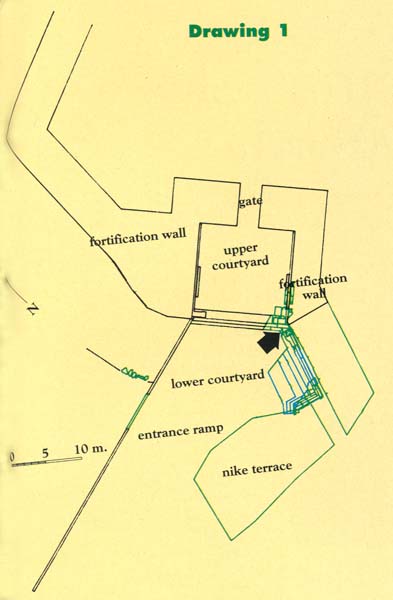A Computer’s-Eye View of the Acropolis Gateway
Sidebar to: The Past Meets the Future: Reconstructing with Computers
The computer-generated drawings shown here illustrate the capacity of CADD programs—Computer-Assisted Drafting and Design—to generate drawings of extant remains, to add archaeologists’ reconstructions and to rotate these drawings to demonstrate different views.
Drawing 1 shows a plan of the gateway to the Acropolis in Athens as rebuilt early in the fifth century B.C. The gateway had been almost completely destroyed by the Persians in 480 B.C. The reconstruction shown here, generated by author Eiteljorg, assumes that the Athenians rebuilt the gateway in the Mycenaean style of its predestruction predecessor. Green on the plan indicates extant remains, while blue indicates elements that are no longer extant but virtually certain. Elements shown in black, however, have been reconstructed on the computer.

Drawing 2 is the computer’s ground-level closeup of the walls and steps actually found in the corner where the steps to the upper courtyard meet the steps to the right (see arrow on plan). The two large vertical blocks at upper left are marble; to the right is a stack of five limestone blocks, and farthest to the right is another vertical marble block topped by two smaller limestone blocks. One feature of the CADD program is the ability to display specific building materials. For instance, when considering an earlier stage of the entrance, Eiteljorg called up a view with only the marble blocks shown and realized that all the limestone material belonged to the later period.
Already a library member? Log in here.
Institution user? Log in with your IP address.

